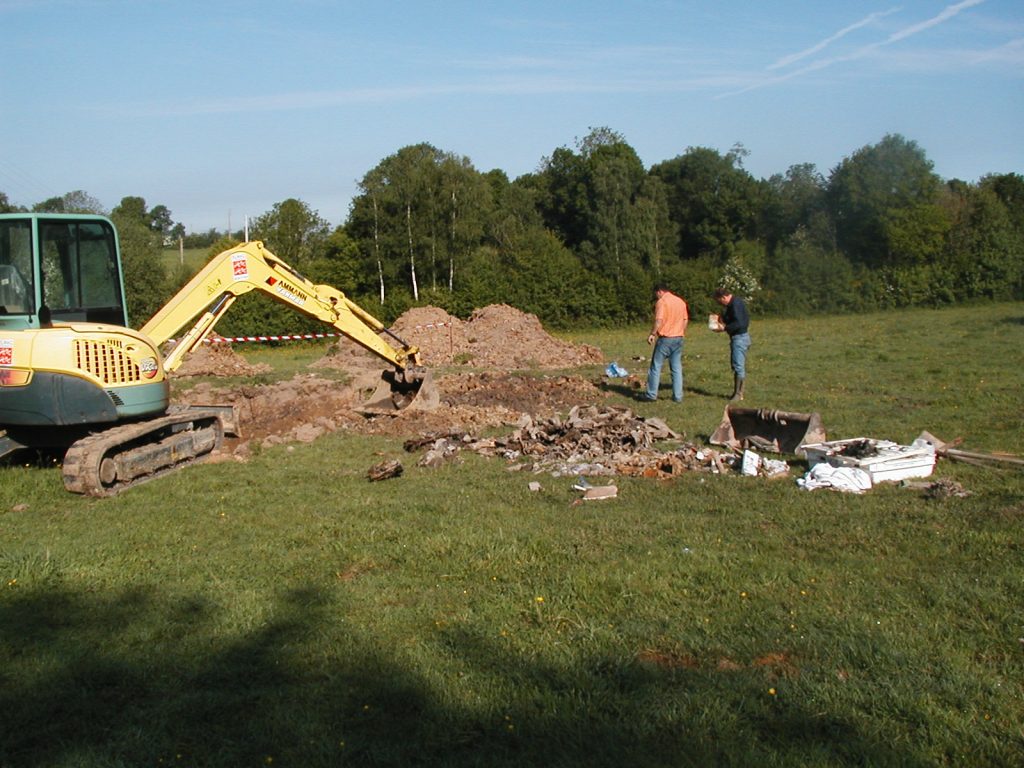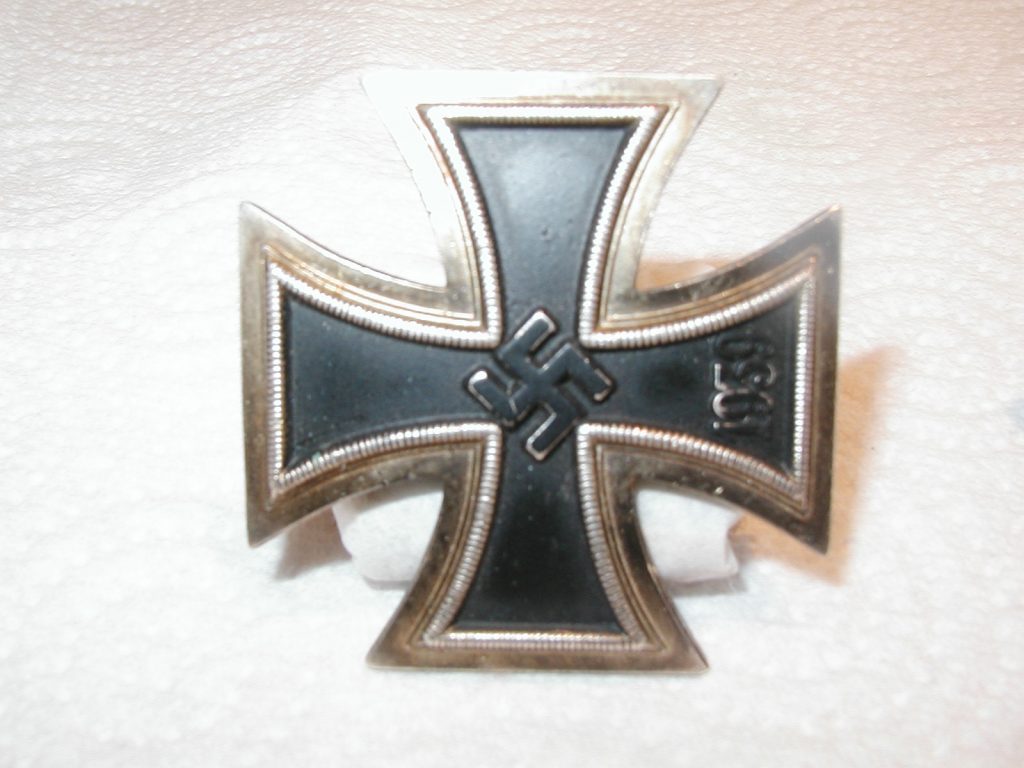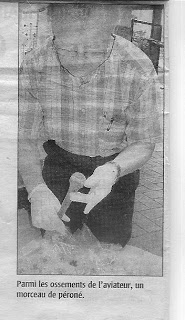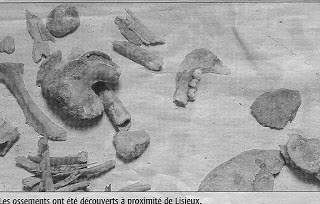The curator of the Grand Bunker – Atlantic Wall Museum in Ouistreham, has just made the discovery, in a grass near Moyaux: his team unearthed the remains of a German plane shot down in June 1944 during the Battle of Normandy.
Fabrice Corbin, curator Ouistreham Museum, has just made a great find, in a grassland located east of Lisieux, between Moyaux and Ouilly-du-Houley. Aided by his team, he has just unearthed the remains of a hunter Focke Wulf, a German plane probably shot down during the Battle of Normandy in June 1944. In the cabin, the men discovered the bones of a Luftwaffe pilot , remained prisoner of his craft.

It is on the testimony of Fabrice Corbin, his brother Laurent and Eddy Eudes another volunteer, decided to dig in this herbage, at a place called Pouplin. Didier Hachet, one of the witnesses, recalls: “We had just finished eating that day when we saw a plane coming in. They fired on another machine and the plane burst. When I was fourteen, my brother and I went to see: there was a lot of splinters, and when we got to the crash site, a German soldier was there, he put his bicycle and watched the scene. We were afraid of German so we left. “
For sixty years, the plane remained there. The hole had been plugged. “And then with the sixtieth anniversary of the landing, celebrated with the German authorities, the languages are dedicated and a witness contacted me, explains Fabrice Corbin, it was bothering him, this German left without burial.” Excavations began on a Friday and the following Sunday, those who call themselves “modern archaeologists” found objects that belonged to the pilot. “An automatic Walter pistol, a survival knife, shattered by shock and his watch and the parachute elements he never opened.
At seven meters deep, the researchers discovered the engine, the compass of the plane, the radio system and a half-burned plastic card covering the banks of the Channel, from London to Normandy. “It’s a bit like a treasure hunt,” says Fabrice Corbin. Above all, the three men found the soldier’s iron cross, twisted on what was left of his body. “We are going to warn the German cemetery, what we would like is to find his plate, to find out who he was, so we could try to contact his family.”

EXPERTISE OF THE BONES OF AN UNKNOWN SOLDIER
The remains of a Luftwaffe pilot were handed over to the Cambe Cemetery.
Lucien Tisserand is curator at Normandy’s largest military cemetery in La Cambe, where 21,400 German soldiers are buried. Wednesday, June 7, 2006, Brigitte Corbin and Phillippe Azouz, gave him the bones of a German aviator whose identity remains to be discovered. It is Fabrice Corbin and his team who, two years ago, dug up the remains of a Focke Wulf 190 A8 at the place called Pouplin, east of Lisieux, buried some 7 meters underground.


It is a great moment of emotion when Lucien Tisserand spreads on the tarpaulin a miltitude of bones, pieces of skull, fringing of jaw, vertebrae … which he names one by one without hesitation, showing here on the soft cartilage of a bone head, indisputable evidence of the age of the soldier: the young man, 25 years, rather slender, was not big. Three molars of the lower jaw do not show any signs of care.
Lucien Tisserand recalls that are found, each year, on average 10 remains of soldiers. Since the beginning of 2006, in 6 months, it has already been found 14. He has a long experience of the remains of bodies to find clues, especially on the jaws or teeth. “I always advise not to remove anything from the earth that fills a skull because many soldiers put in their mouth that they wanted to avoid being stolen: their plate, an alliance …”
Since its inception, the cemetery has accurately considered all the bodies that are buried there. Descriptive sheets of anatomy are scrupulously filled, as for this aviator, and then sent to the Deutsche Dienst Stelle, the German archives service in Berlin, whose valuable collaboration contributes to the discovery of the truth.
